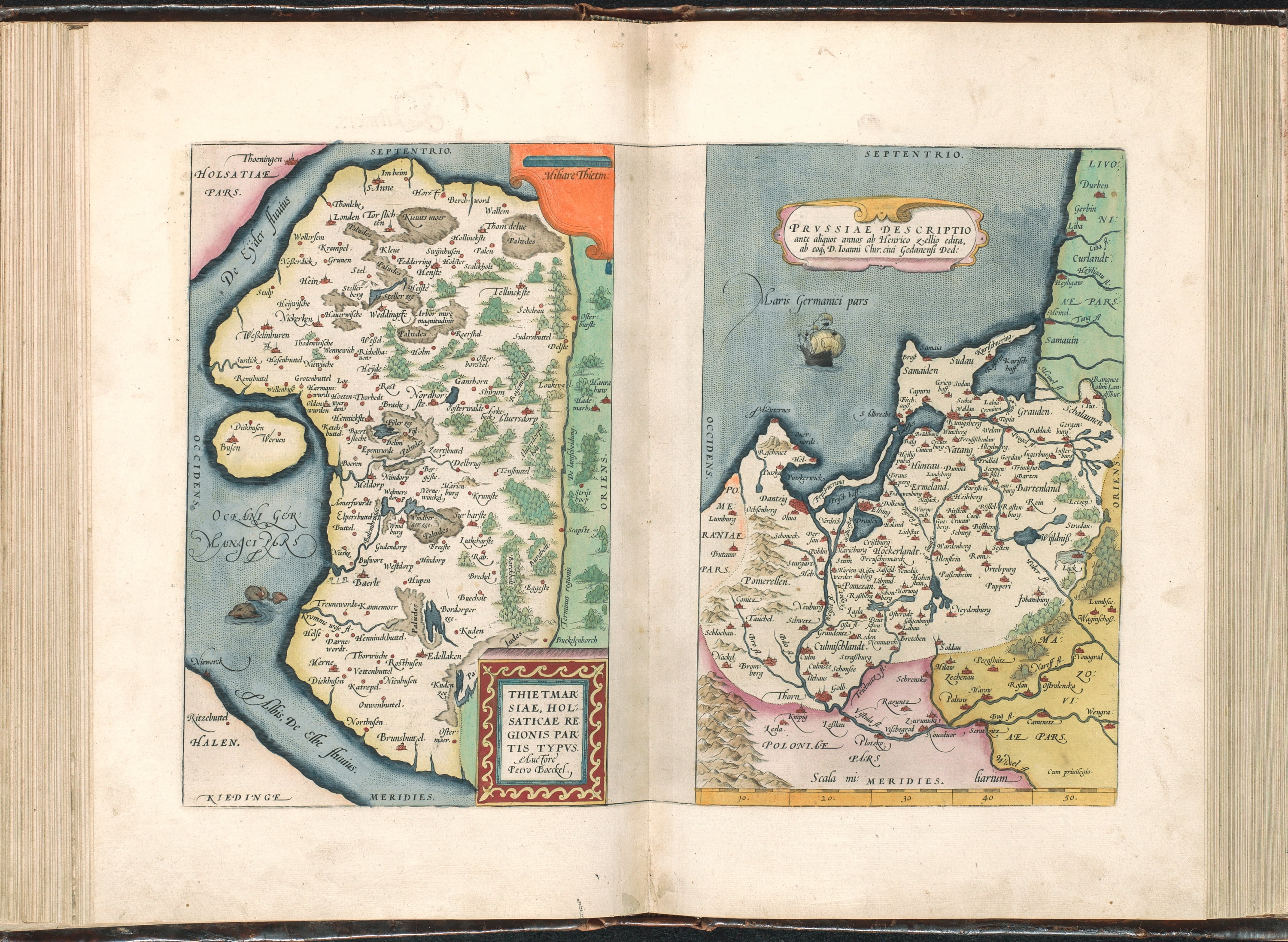

Beautiful full 17th-century Spanish mottled sheep, the spine in seven compartments, with six raised bands, tan morocco lettering-piece in the second, the others decorated with fine gilt tools of bunches of daisies interspersed with small cleft pomegranate of Aragon tools, French hand-coloured decorative endpapers captioned 'A Paris chez Les Associes No 119' (lower cover and extremities a bit scuffed). Elaborate engraved allegorical title-page, double-page world map "Typus Orbis Terrarum", undated and with the South American coastline retaining its destinctive bulge (small separation at foot of the centre-fold), 99 double-page maps of the world, and historiated initials, all with MAGNIFICENTLY RICH CONTEMPORARY HAND-COLOUR IN FULL (without A4, the portrait of Ortelius, the map of Spain a bit creased with one or two short marginal tears occasionally crossing the image, and strengthened at an early date along the verso of the left-hand edge and the centre-fold, short early repair to tear on verso of map of Crete), extra-illustrated with large folding prospectus for a map of the Kingdom of Portugal, to be printed in Salamanca, ca 1738-1753, tipped-in after the Contents, and a small folding engraved plate "Carta del Viage de los Israelites", 1747, at end. Now, you can go just about anywhere, like to these unique AirBnBs.Folio (16 4/8 x 11 4/8 inches). Using science and their imagination, they brought the world into focus.īack in the days before accurate maps and GPS, traveling was difficult. It’s hard to imagine a time when we didn’t know what the world looked like, and we can thank men like Mercator and Ortelius for paving the way. Most public schools until 1991 used Mercator’s Projection, misleading people into believing Greenland is the same size as Africa. On May 20th, 2018, the Google Doodle featured one of his maps, and originals go for tens of thousands of dollars at auction.

Mercator and Ortelius are both revered for their contributions. You can take a look at a digital copy online for free. Mercator died before he could publish the Atlas, but it was released in 1594 just a year after his death. According to legend, this king created the first celestial globe. He called the book an Atlas, after King Atlas of Mauretania. These types of descriptions actually make up the majority of the book, with the table of chronology totaling around 400 pages. He created detailed a book collecting 100 new regional maps, illustrated title pages, and text describing the countries and even the creation of the universe. When he died in 1598, the “Theatre” had 25 editions published in seven languages. The first edition consisted of 53 maps but Ortelius continued improving on it as copies sold out. In 1570, he released his “Theatre of the Round World.” It’s considered the first atlas, even though it doesn’t bear that name. With Mercator’s assistance, Ortelius collected the best maps he could find. Sailors wanted something in a book, however, with bindings. Ortelius began buying maps, redrawing them in color, and mounting them on silk. This relationship might have inspired Ortelius to lean towards map-making. He traveled to Frankfurt, Germany for this business, which is where he met Mercator in 1554. It didn’t pay much, so he also traded books, prints, and maps. In 1547, he became work as a map illuminator. Unlike the older Mercator, Abraham Ortelius traveled extensively. Sailors using this map didn’t have to recalculate their bearings. It’s cylindrical and uses straight latitude and longitude lines. In 1569, he created what’s known as the Mercator projection. His maps hung on walls like tapestries, they were so big. He also spoke six languages, so he wrote letters with other great minds of the day. He didn’t travel much, so he collected his information from thousands of books and maps. Mercator became a mathematician and intellectual, and focused his work on maps. Sailors, merchants, and explorers collected information on the lands they traveled and brought them to cartographers, who did their best to imagine what the world looked like from above.
.jpg)
Born in 1512, Gerardus Mercator’s world was vaguely-outlined.


 0 kommentar(er)
0 kommentar(er)
